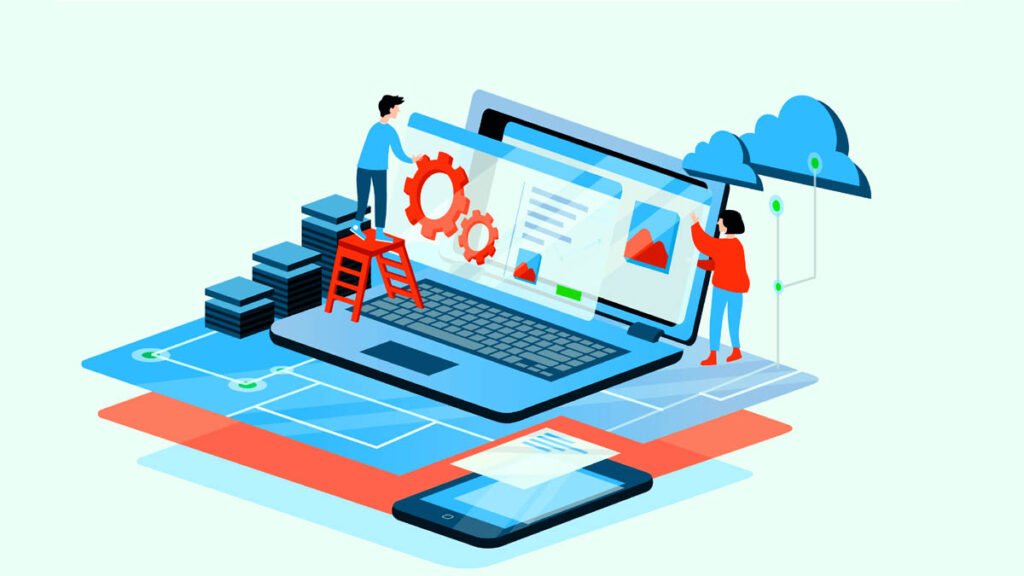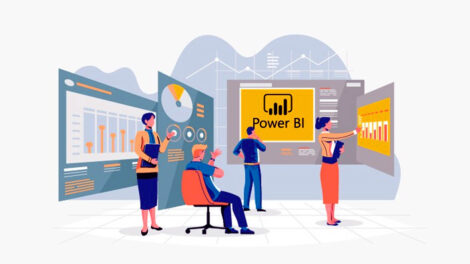Power BI, a business analytics service by Microsoft, has revolutionized how organizations visualize and share insights from their data. Power BI dashboards enable businesses to monitor performance, discover patterns, and make data-driven decisions. This article delves into Power BI dashboard development services, highlighting their importance, functionality, and the benefits they offer to businesses of all sizes.
Importance of Power BI Dashboards
Power BI dashboards are crucial for organizations seeking to harness their data for better decision-making. They provide a consolidated view of key metrics and trends, enabling stakeholders to understand performance at a glance and take timely actions.
Benefits of Power BI Dashboards
Real-Time Data Monitoring: Dashboards update in real time, providing the latest information.
Interactive Visualizations: Users can interact with data to uncover deeper insights.
Centralized Data: Integrates data from multiple sources into a single view.
Enhanced Collaboration: Facilitates sharing and collaborative analysis.
Types of Power BI Dashboards
There are various types of Power BI dashboards tailored to different business needs:
Operational Dashboards
These dashboards focus on monitoring the day-to-day operations of an organization. They provide real-time data on processes, ensuring everything runs smoothly and efficiently.
Strategic Dashboards
Strategic dashboards are used by senior management to track long-term company goals and key performance indicators (KPIs). They help in strategic planning and performance tracking.
Analytical Dashboards
Analytical dashboards are designed for deep data analysis. They offer complex data visualizations and analytics tools that help users understand trends and patterns.
Tactical Dashboards
These dashboards assist middle management in monitoring performance and making decisions based on short-term goals and objectives.
Benefits of Using Power BI Dashboards
Utilizing Power BI dashboards offers numerous advantages:
Improved Decision Making
Power BI dashboards provide a comprehensive view of key business metrics, facilitating data-driven decisions. They enable users to identify trends, track performance, and make informed decisions quickly.
Enhanced Collaboration
Power BI makes it easy to share dashboards and reports with team members. This fosters collaboration and ensures that everyone is on the same page with the latest data insights.
Cost Efficiency
Power BI reduces the need for extensive IT resources and infrastructure. Its SaaS model is cost-effective, providing powerful analytics capabilities without the need for heavy upfront investments.
Scalability
Power BI is suitable for organizations of all sizes. It can handle large datasets and complex analyses, making it a scalable solution as your business grows.

Steps to Develop a Power BI Dashboard
Developing a Power BI dashboard involves several steps:
1. Define Objectives
Clearly outline the goals and metrics you want to track. Understanding the purpose of the dashboard helps in designing it effectively.
2. Gather Data
Collect data from relevant sources. This could include databases, spreadsheets, and cloud services.
3. Data Preparation
Clean and transform the data for analysis. By doing this, the data is correct and prepared for visualization.
4. Design Dashboard
Create a layout that presents data effectively. Consider user experience and ensure that the dashboard is easy to navigate.
5. Build Visualizations
Use charts, graphs, and other visual tools to represent the data. Ensure that the visualizations are clear and informative.
6. Deploy and Share
Publish the dashboard and share it with stakeholders. Power BI offers several sharing options, including email and web links.
Best Practices in Power BI Dashboard Development
To create effective Power BI dashboards, consider the following best practices:
Keep It Simple
Avoid clutter by focusing on essential metrics. A clean and simple design makes the dashboard more user-friendly.
Ensure Accuracy
Validate data accuracy before visualization. Incorrect data can lead to misleading insights and poor decision-making.
User-Friendly Design
Design with the end-user in mind. Make sure the dashboard is simple to use and intuitive.
Regular Updates
Maintain and update dashboards regularly to reflect current data. This ensures that users always have access to the latest information.
Common Challenges in Power BI Dashboard Development
Developing Power BI dashboards can present challenges such as:
Data Quality Issues
Ensuring data integrity and accuracy is crucial. Poor data quality can lead to incorrect analyses and decisions.
Performance Optimization
Managing performance for large datasets can be challenging. Slow dashboards can hinder user experience and productivity.
User Adoption
Encouraging users to adopt and use dashboards effectively is essential for realizing the full benefits of Power BI.
Overcoming Challenges
Addressing these challenges involves:
Data Governance
To guarantee data quality and integrity, put strong data management procedures into place. This covers routine data validation and audits.
Performance Tuning
Optimize queries and data models for better performance. Use techniques such as indexing, data compression, and query optimization.
Training and Support
To maximize adoption, give users assistance and training. This includes offering tutorials, documentation, and ongoing assistance.
Customization and Personalization
Power BI allows for extensive customization and personalization, enabling businesses to tailor dashboards to their specific needs and branding.
Custom Visuals
Power BI supports custom visuals, allowing users to create unique visualizations that cater to their specific requirements.
Theming
Users can apply themes to dashboards to align with their corporate branding and enhance visual appeal.
Security and Compliance
Ensuring data security and compliance is critical. Power BI offers features like role-based access control, data encryption, and compliance with standards like GDPR.
Role-Based Access Control
Power BI allows administrators to set up role-based access controls, ensuring that users only see the data relevant to their roles.
Data Encryption
Power BI uses encryption to protect data both at rest and in transit, ensuring that sensitive information remains secure.
Compliance
Power BI complies with various industry standards and regulations, such as GDPR, HIPAA, and ISO certifications, providing peace of mind to organizations handling sensitive data.
Integration Capabilities
Power BI’s integration capabilities allow it to connect with various data sources, including Excel, SQL Server, and cloud services like Azure and Salesforce.
Data Sources
Power BI supports a wide range of data sources, making it easy to integrate data from different platforms.
Third-Party Services
Power BI can integrate with third-party services such as Google Analytics, Salesforce, and other CRM systems, providing a comprehensive view of business data.
Cases of Power BI Dashboards
Power BI dashboards are used across industries for various purposes:
Finance
Power BI dashboards help finance teams with budgeting, forecasting, and financial analysis. They provide real-time insights into financial performance and trends.
Marketing
Marketing teams use Power BI to track campaign performance, analyze customer segmentation, and gain insights into market trends.
Sales
Sales teams benefit from Power BI dashboards by tracking sales performance, managing pipelines, and analyzing customer insights.
Operations
Operational teams use Power BI for supply chain management, inventory tracking, and production monitoring, helping to optimize processes and reduce costs.
Case Studies
Several organizations have successfully implemented Power BI dashboards to achieve their business objectives. For instance:
Retail Chain
A retail chain improved sales tracking and inventory management using Power BI dashboards. This enabled them to optimize stock levels and reduce wastage.
Healthcare Provider
A healthcare provider enhanced patient care through data-driven insights provided by Power BI dashboards. This helped in identifying patient trends and improving service delivery.
Manufacturing Company
A manufacturing company optimized its production processes and reduced downtime by using Power BI dashboards. Costs were reduced and efficiency rose as a result.
Final Thoughts
Power BI dashboard development services offer powerful tools for transforming data into actionable insights. By following best practices and overcoming common challenges, organizations can leverage Power BI to drive business success.
FAQs
Why are Power BI dashboards important?
They provide a consolidated view of key metrics, facilitating better decision-making and performance monitoring.
What types of dashboards can be created in Power BI?
Operational, strategic, analytical, and tactical dashboards.
What are the steps are involved in Power BI Dashboard Development Services?
Define objectives, gather data, prepare data, design the dashboard, build visualizations, and deploy/share the dashboard.
What are the common challenges in developing Power BI dashboards?
Data quality issues, performance optimization, and user adoption.
How can these challenges be overcome?
Through data governance, performance tuning, and user training and support.
What are some use cases for Power BI dashboards?
Finance, marketing, sales, and operations.
What are the future trends in Power BI?
Enhanced AI and machine learning, augmented analytics, and increased automation.



